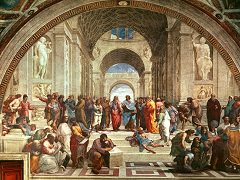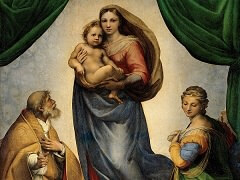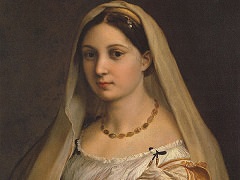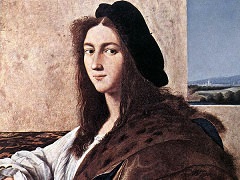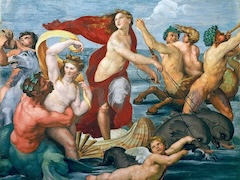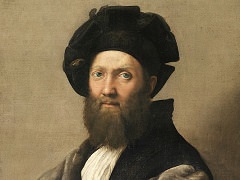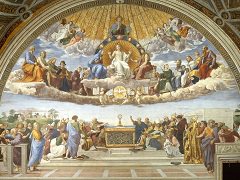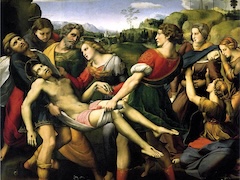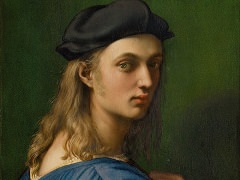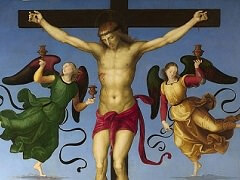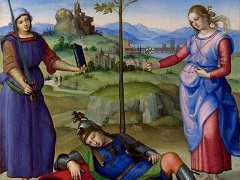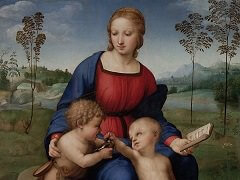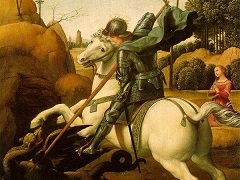The Marriage of the Virgin - by Raphael
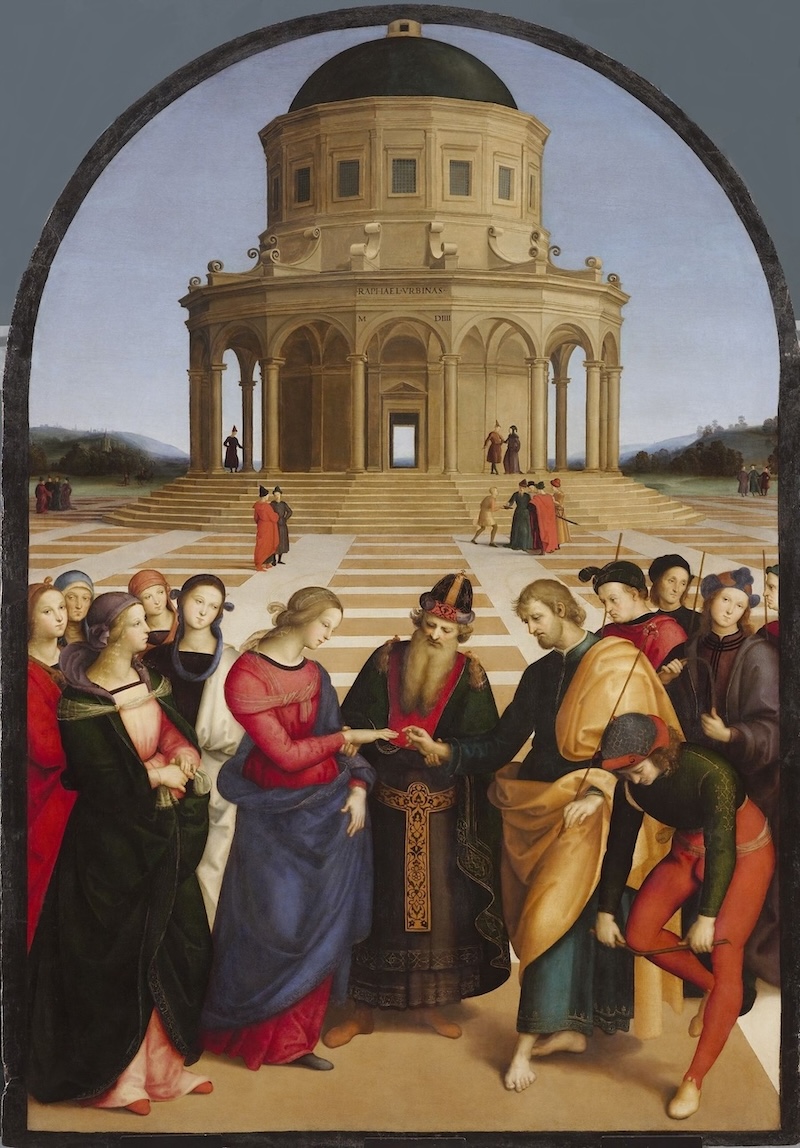
In the early years of the 15th century, patrons in Citta di Castello sent three commissions to Raphael's teacher Pietro Perugino which, in Perugino's absence, were completed by Raphael. The Marriage of the Virgin was the last of these. Evidently inspired by one of Perugino's paintings, also known as Marriage of the Virgin, Raphael completed his own work, according to the date placed next to his signature, in 1504.
The Marriage of the Virgin is Raphael's last painting wholly in the stylistic language of his master Perugino. If it is possible to say so, he not only equaled Perugino within his own formal vocabulary, as in The Mond Crucifixion, but actually surpassed him in this picture. The general outline of the composition, with the arcuated top, follows one set forth by Perugino in several paintings. In the background there is a centralized temple set into the arched frame, whereas strung across the lower foreground the main figures act out the events. Connecting these two pictorial centers, the building above and the marriage scene below, are scattered, isolated images that populate the vast space.

